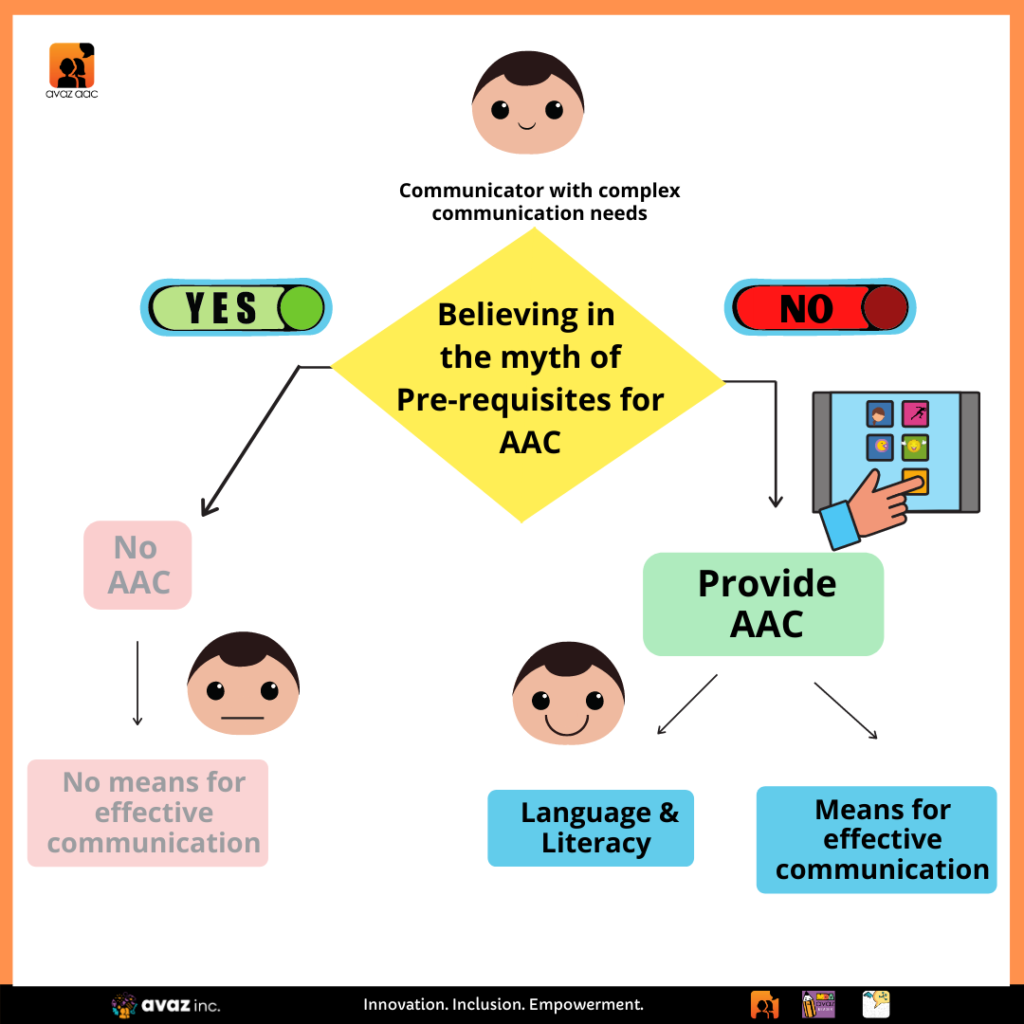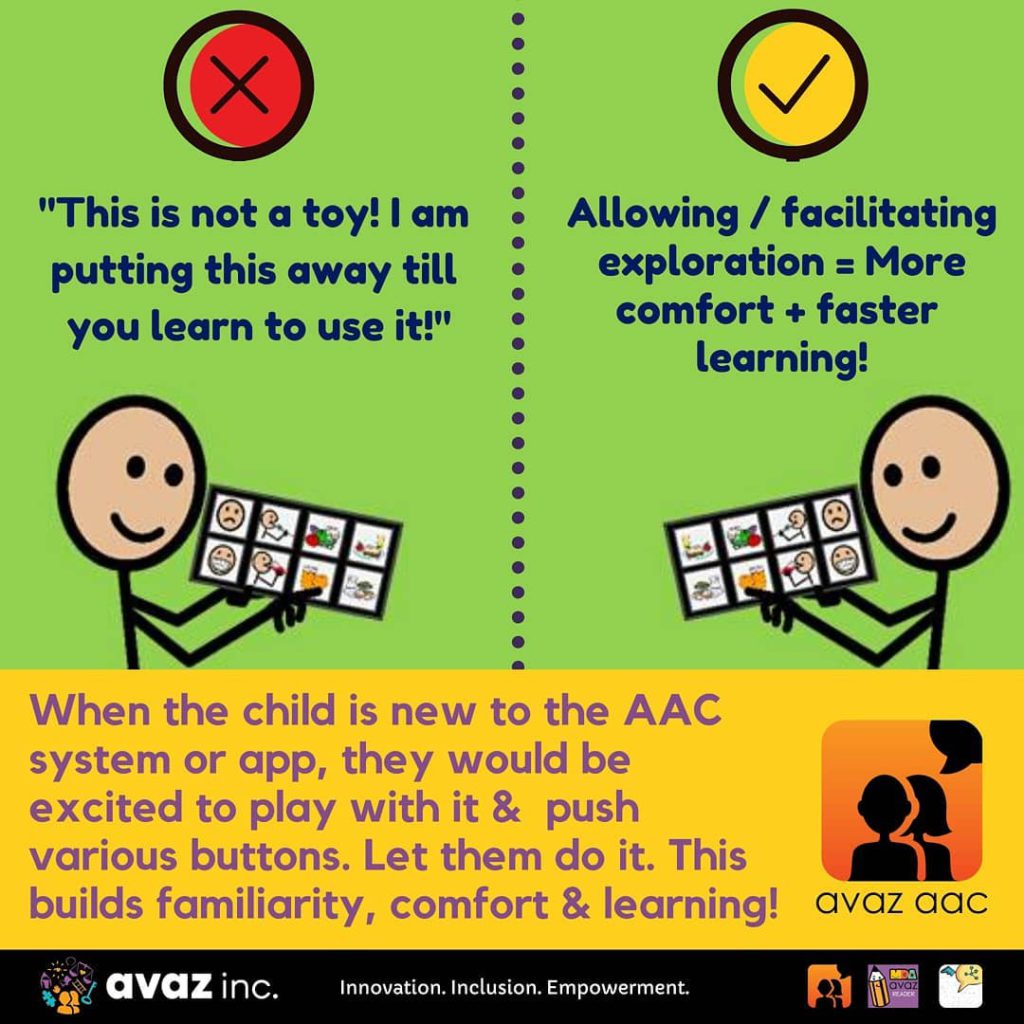Augmentative and Alternative Communication (AAC) provides a means for people with complex communication needs to express themselves. Here are a few things to keep in mind for your AAC implementation to be successful:
Presume Competence
Have faith in your child and assume that your child is COMPETENT. It’s really important that you believe in their ability to learn and communicate.
There are no pre-requisite skills for AAC use. So, you don’t have to worry about a communicator’s cognitive deficits or language difficulties limiting their ability to use AAC.
It is wiser to take the least dangerous assumption when we assess a communicator’s abilities. The communicator is better off when we get rid of any preconceived notions and provide them the necessary supports for communication.


Ensure Constant Access to AAC
Truth be told, learning AAC can be difficult. It’s like learning a new language. And most of us would need a lot of motivation to do tasks that are difficult. Similarly, we need to make sure the communicator has an environment that is conducive to using AAC. One way to ensure that is by making AAC systems readily available for them wherever they are. This means we may have to use a combination of low tech and high tech AAC systems so that communicators have access to AAC in all environments.
Say, a child communicates through vocalizations. The family understands the child’s communication and the child’s needs are met. The child wouldn’t typically take the trouble to walk to their bedroom to get their AAC system in order to communicate. This is why having an AAC system accessible to them is important to encourage AAC use.
Allow the child to babble
Initially, the communicator may not be using their AAC systems meaningfully. Allow them to tap random buttons. This helps them to independently explore various options and discover words on their own by ‘playing’ with the app. Typically developing children play around with speech sounds and babble before they begin to say words. Similarly, AAC babble is a significant part of a communicator’s learning process and we cannot discourage that.


Don’t assume “he’s just playing with it” and take it away. Acknowledge what the communicator is saying, draw meaning from it, and respond appropriately. When we give an opportunity to do something without any demands, they are more likely to take to the system.
Hope you find these beginner tips for implementation of Augmentative and Alternative Communication useful. Please give your feedback and suggestions in the comment section below.



